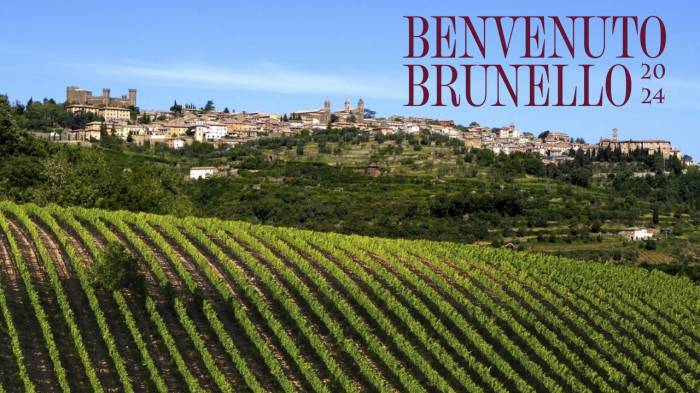Montalcino Wine Tourism Drives €150 Million Boost as Foreign Visitors Hit 71% of Arrivals
Brunello producers see record bookings and rising global demand despite tariff uncertainty and shifting international wine markets
2025-11-21

Montalcino, a small hill town in Tuscany, is experiencing a surge in wine tourism that is providing a significant economic boost to the region’s famed Brunello di Montalcino producers. As the 34th edition of Benvenuto Brunello opens its doors, local winemakers and business owners are welcoming visitors with cautious optimism. The event, which runs from November 20 to 24, comes at a time when the area is seeing record numbers of tourists and renewed momentum in bottled wine sales, even as uncertainty over international tariffs and shifting global markets continues.
Recent data from the Statistics Office of the Region of Tuscany and Istat show that nearly 235,000 people visited Montalcino in 2024. Early figures for 2025 indicate that this trend is holding steady. The economic impact of this influx is substantial. According to estimates, every bottle of Brunello uncorked generates about €117 (approximately $125) for the local economy—four times the value of the bottle at its source. This multiplier effect extends beyond wineries to hotels, restaurants, wine shops, and other businesses throughout the area.
Giacomo Bartolommei, president of the Consorzio del vino Brunello di Montalcino, described wine tourism as a “multiplier of wealth” for the territory. He noted that it benefits not only wine producers facing challenges such as U.S. tariffs and declining consumption but also the broader local economy. The Uiv Vinitaly Observatory estimates that direct and indirect benefits from wine tourism now exceed €150 million (about £130 million).
Montalcino’s international appeal has led to a robust tourism infrastructure. The region now boasts 12 hotels—including three five-star properties—over 180 agritourism accommodations, dozens of restaurants (two with Michelin stars), as well as numerous wine shops and bars. Consortium figures show that accommodation bookings reached a record 233,000 in 2024, up 6.3% from 2023 and nearly 30% higher than pre-pandemic levels in 2019. Between May and August 2025 alone, there were 130,000 overnight stays recorded. Demand is rising from France, Eastern Europe, China, and the United Kingdom. Foreign visitors make up 71% of arrivals, with Americans leading the way and increasing numbers coming from South Korea and China.
Despite these positive trends in tourism, Bartolommei emphasized that producing and selling high-quality wine remains the core mission for local producers. The past year has been complicated by uncertainty over tariffs on Italian wines entering the United States—a key export market for Brunello di Montalcino. Once tariff rates were clarified, producers and distributors adjusted to absorb an additional 15% cost. In October, bottling activity rebounded sharply: more than 1.92 million government bands were delivered to wineries for labeling bottles, nearly matching last year’s pace after a summer dip.
The sector is now focusing on the launch of the highly anticipated 2021 vintage during Benvenuto Brunello in hopes of reenergizing interest among American buyers and importers.
Montalcino’s experience mirrors global trends in wine tourism. A recent study conducted by Hochschule Geisenheim University in partnership with UN Tourism, the International Organisation of Vine and Wine (OIV), Great Wine Capitals Global Network, and WineTourism.com surveyed more than 1,300 wineries across 47 countries. The Global Wine Tourism Report 2025 found that 65% of wineries consider wine tourism profitable or very profitable. Nearly nine out of ten now offer experiences such as tastings or vineyard tours.
The study reports a median of 1,500 visitors per winery each year worldwide; domestic tourists account for about two-thirds of these visits. On average, wine tourism contributes a quarter of global winery revenue—a figure that rises to nearly one-third outside Europe. More than half of surveyed wineries plan further investment in their tourism offerings, while almost three-quarters expect continued growth in this area.
Sustainability is also gaining importance: two-thirds of respondents said it is important for their tourism business. While economic pressures and changing consumer preferences remain challenges for many producers worldwide, most believe that wine tourism will continue to grow in their regions.
For Montalcino’s winemakers and business owners, these trends offer hope amid ongoing uncertainty over trade policy and global demand. As visitors continue to flock to Tuscany’s vineyards and cellars, wine tourism is playing an increasingly vital role in supporting rural economies and sustaining one of Italy’s most celebrated wine regions.
Founded in 2007, Vinetur® is a registered trademark of VGSC S.L. with a long history in the wine industry.
VGSC, S.L. with VAT number B70255591 is a spanish company legally registered in the Commercial Register of the city of Santiago de Compostela, with registration number: Bulletin 181, Reference 356049 in Volume 13, Page 107, Section 6, Sheet 45028, Entry 2.
Email: [email protected]
Headquarters and offices located in Vilagarcia de Arousa, Spain.